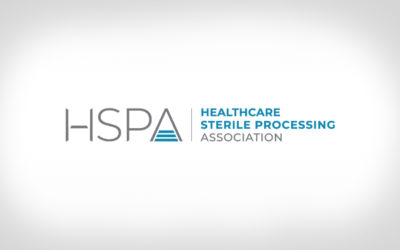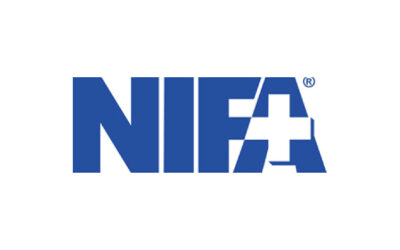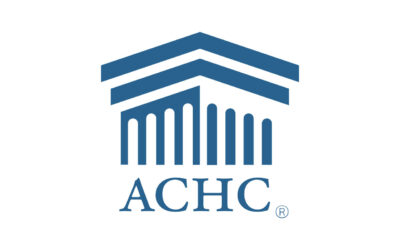By Rose Seavey
The Association of periOperative Registered Nurses (AORN) published its updated Guideline for Sterilization in September 2018. The guideline covers recommendations for sterilization of reusable medical devices by steam, dry heat, as well as low-temperature methods (including ethylene oxide, hydrogen peroxide gas plasma or vapor, ozone combined with hydrogen peroxide, and peracetic acid).
In addition to addressing the various sterilization methods, this guideline, which was last updated in 2012, covers how to:
- Load sterilizers;
- Transport sterile items;
- Perform sterilization quality control; and
- Install and maintain sterilization equipment.
In preparation for the update, the guideline underwent a strict evidence review process. Using the AORN Evidence Rating Model, recommendations were rated based on the quality and quantity of similar published evidence and then were given an appraisal score (the evidence score is placed in brackets after each applicable reference). For example, Recommendation 1.a. “Items that enter sterile tissue, including the vascular system, should be sterile when used.” [1: Strong Evidence]
What’s New in the Guideline?
This article highlights some of the updates and newly recommended practices covered in this updated guideline.
Sterilize Whenever Possible
The guideline discusses the current scientific debate on the need to update the Spaulding classification system due to newly identified pathogens that are resistant to high-level disinfection (HLD). Some devices may no longer belong in the semi-critical category. Many devices (e.g., endoscopes) that have historically been considered semi-critical and processed by HLD have an increased risk of transmitting infections from one patient to another compared to those that were sterilized. AORN now recommends “Reusable semicritical items that are manufacturer-validated for sterilization should be sterilized if possible.” [3: Moderate Evidence] Fortunately, today, there are new and updated low-temperature sterilizers that are cleared by the U.S. Food and Drug Administration (FDA) for processing items such as endoscopes.
Sterile Storage
Recommendation IV in the guideline states “Sterile items should be stored in a controlled environment.” We know that shelf life is reliant on many factors, such as packaging material, storage conditions, transport and handling. While this recommendation isn’t totally new, it now states: “The shelf life should be event-related unless otherwise specified by the packaging system manufacturer’s labeled expiration date.” [4: Limited Evidence]
Recommendation IV.b.2. states that “Sterile items outside a designated sterile storage room should be stored in closed cabinets or covered carts.” While there is limited evidence, it makes sense because controlled conditions reduce the risk of contaminating sterile items. More information on this can be found in the AORN Guideline for Design and Maintenance of the Surgical Suite.
Phacoemulsification Handpieces
A new recommendation in the guideline is to ensure packages containing phacoemulsification handpieces are positioned and held upright during the steam sterilization process. Current evidence shows that sterilization is more likely to be achieved when the channels of these handpieces are orientated vertically – with no obstruction at the end of the channel – so they can drain freely during steam sterilization.
Immediate-Use Steam Sterilization (IUSS)
IUSS should only be performed by competent personnel who use the right equipment in the right setting. For IUSS to be effective, all appropriate conditions must be met, including following the manufacturer’s instructions for use (IFU) for:
- Cleaning;
- Cycle type;
- Exposure times;
- Temperature settings; and
- Drying (if recommended)
Containment devices must be validated by the FDA for IUSS cycles. Steps should be taken to prevent contamination during transport.
Wet Loads/Packs
AORN recommends that “Wet loads or wet packs in a terminal sterilization cycle should be investigated and corrective measures taken.” [4: Limited Evidence] After complete terminal sterilization cycle that includes drying may indicate a problem with the steam supply, sterilizer function or load configuration. The guideline describes practical approaches to investigating the causes of wet loads/packs.
Assess Environmental Effects
Recommendation XI of the guideline states that “The health care organization may establish a strategy for shutting down idle steam sterilizers.” It goes on to discuss the need for environmental safety and responsibility for strategies for sterilization, such as energy consumption, harmful emissions, toxicity, cost reduction, etc. AORN encourages an interdisciplinary team to evaluate sterilization purchases and usage decisions. XI.a. recommends that “The health care organization may establish a strategy for shutting down idle steam sterilizers.” [3: Moderate Evidence]
Sterile Processing Leadership
A new recommendation in the guideline is for health care facilities to assign responsibility and authority for leadership of the sterile processing team to qualified personnel. A high degree of expertise is needed due to the complexity of sterilization processes together with ever-changing technologies and instrumentation.
Note: This article only covers some of the newly updated recommendations for sterilization, based on current evidence related to sterilization. Readers are encouraged to review and follow the entire guideline in order to help reduce risks to patients and staff.
Resources
Association of periOperative Registered Nurses. Guideline for Sterilization. In: Guidelines for Perioperative Practice. 2018.
Hauk, L. Guideline First Look. AORN Journal. Aug. 2018, Vol. 108. No. 2, pp. 10-12.
– Rose Seavey, MBA, BS, RB, CNOR, CRCST, CSPDT, is President/CEO of Seavey Healthcare Consulting and former Director of the Sterile Processing department at The Children’s Hospital of Denver.










